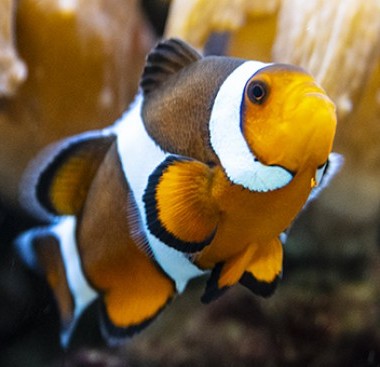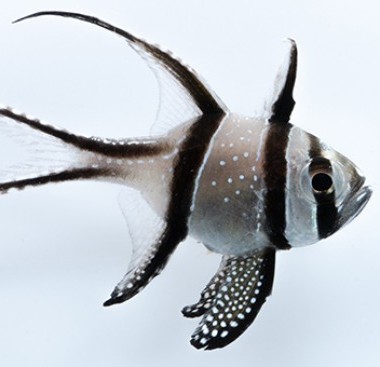Tuna Fishermen VS Environmentalists
Destruction of an industry
By: Staff Date: 01/10/2012 Category: | Animal Legislation | Wildlife Journal |
Fishermen developed the purse seine method of catching large yellowfin tuna in 1957 and began casting these nets around dolphins swimming above schools of mature yellowfin. Even with the introduction of the back-down method of releasing dolphins from the nets, the marine mammals often became entangled and drowned. Although no numbers were recorded, it was obvious that mortality was high.
In 1968, collection of data began when a scientist from the National Marine Fisheries Service accompanied the crew of a purse-seine vessel on a trip and reported dolphin mortality. Figures were available for dolphin deaths on only nine of 4250 fishing trips from 1959-1972. None of the boats on these nine trips used the back-down method to release dolphins, yet they were used to represent the full fleet in the Eastern Tropical Pacific yellowfin fishery. Estimates of 350,000 dolphin deaths per year were extrapolated from this sporadic, inconclusive, and biased data. Environmentalists protested the dolphin deaths, and public sentiment began to build against the fishermen.
Better sampling was done from 1972-76, after the US Congress passed the Marine Mammal Protection Act. Dolphin mortality was about 150,000 in 1973 and declined to about 130,000 in 1976. Although the numbers were high, they represented 1.5-1.3 percent of the total dolphin population in the eight million square mile fishery that stretches from California south to Chile and west to Hawaii. Since dolphin reproduce at between two and six percent of their population, their viability was not threatened by tuna fishing.
In spite of the lack of impact of the higher numbers on populations, in 1976 the US commerce secretary permitted the fishing fleet to kill 78,000 dolphins, considerably less than one percent of the total. Efforts of the fishermen and pressure from environmentalists and Congress combined to reduce dolphin kills to well below 50,000 per year for the next several years, with a drop below 20,000 in 1983.
The early 1980s brought several changes to the fishery. Political pressure and a severe El Niño effect (warm ocean current patterns that disrupt normal ocean ecology) drove many yellowfin away from the fishery and sent American ships into the western Pacific to search for skipjack tuna. Central and South American fleets moved into the yellowfin fishery; without the techniques developed by Americans to release dolphins, these vessels caused a dramatic increase in marine mammal deaths. In 1986, the first year that accurate counts were available on the foreign boats, about 130,000 dolphins died due to the inexperience of these crews.
That same year, the IATTC instituted a voluntary program to teach the foreign fishermen to reduce dolphin deaths that culminated in the 1992 formal agreement known as the International Dolphin Conservation Program. Dolphin deaths have declined to fewer than 4000 per year through these efforts.
However, the 1986 spike in dolphin deaths had unforeseen and damaging consequences for the fishery. Radical environmentalist Sam LaBudde undertook a project for Earth Island Institute to document dolphin slaughter on a tuna boat. LaBudde found a Panamanian boat using outdated equipment and video-taped the killing of dolphins by an inexperienced captain and crew. To make matters worse, the captain was a Basque fisherman whose culture considered dolphins as meat. The tape was sent around the world to malign all tuna fishermen who set nets around dolphins, and LaBudde testified before Congress that the tape was typical of the techniques used by American fishermen.
"I remember the American fishermen who saw the film saying 'We don't fish like that. Everybody knows we don't fish like that,' " said Teresa Platt of the Fisherman's Coalition in San Diego, California in a 1993 interview in EIR Science & Technology. "Of course, everyone was outraged. We were outraged. We tried to get the people who owned the boat arrested, but we didn't have any luck. We tried to do that through the National Fisheries Service in Panama. But anyway, that boat went out of business and that was the end of that.
"But this film of this one boat continued to move - move to Europe, where people were told we were killing between 300,000 and one million dolphins a year, completely out of control, with no observers on the boat."
Congress responded to the accusations by passing the 1988 amendments to the Marine Mammal Protection Act that strengthened embargo provisions for countries that did not abide by the US law. The IATTC training program was underway, but it was not given time to show its success before new MMPA rules were instituted in 1990 - even though it had already reduced dolphin deaths from about 130,000 to about 50,000.
Less than two weeks after the new rules went into effect, tuna canneries capitulated to environmentalists' threats of boycotts and began labeling their products "dolphin-safe." Congress followed quickly with the Dolphin Protection Consumer Information Act that allowed the "dolphin-safe" label only on tuna not caught in association with dolphins in the ETP only. Purse seine fishermen must not only guarantee that no dolphins were killed when they caught the tuna, but that no dolphins were even around when the nets were deployed. However, fishermen using other gear and those using purse seine nets not deliberately set around dolphins could market their tuna as "dolphin safe" even if some dolphins died in the process.
The American tuna fleet was all but destroyed by these decisions; of 106 vessels active in the Eastern Tropical Pacific fishery in 1976, only four remain today. The remainder have moved to other waters or gone out of business; the total Pacific tuna fleet is 48 boats, all but these four outside the eight million square mile ETP. HR 2179 and the new multinational agreement offer some hope for resurrection of the industry in the richest yellowfin fishery in the world.
About The Author
All Authors Of This Article: | Norma Bennett Woolf |












